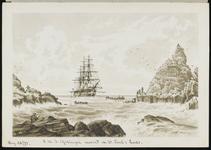At Gen.28-31 the Challenger Papers contain sheets of plates illustrating various marine life forms, and original drawings of marine life forms; engravings, lithographs, photographs, etc. of marine life forms; drawing and engravings of Challenger equipment; and, statistical material, graphs, charts and maps. There are drawings, engravings and photographs of Challenger personnel at various tasks, and of Challenger and its interiors; and, pictures of people and places (not Challenger personnel), and large and small original drawings, engravings, and photographs. There is also miscellaneous textual material, and engraved proof illustrations.
At E2010.07 there are some additional Plates for the Reports of the Challenger Expedition - showing Gasteropoda

